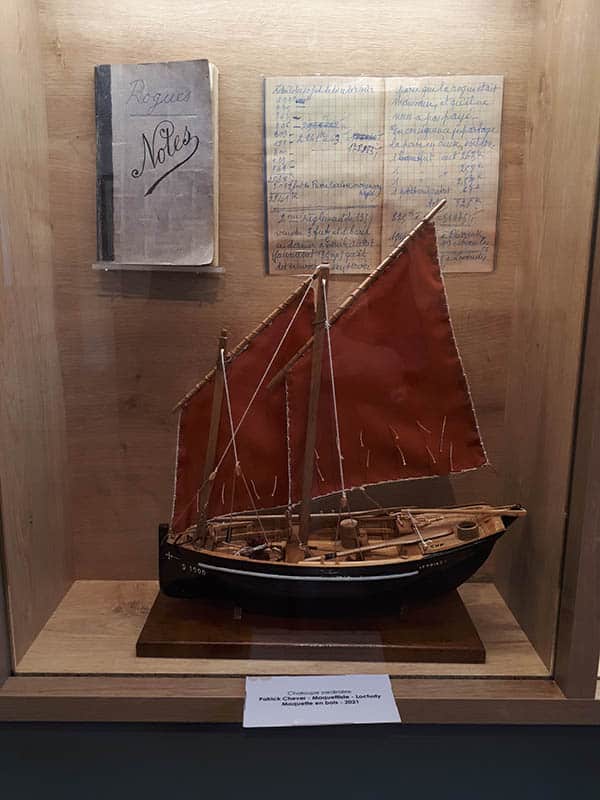In the office window, a beautiful model of a sardine fishing boat from the 1860s-1900s is proudly displayed. This model was made in the 2010s by the former fisherman's master Patrick Chever. Since he started modelling his first ship, a trawler from Concarneau, in 1967, his collection has grown to include around a hundred models of old ships from all over the world.
Patrick Chever works on his models from photographs, frescos and drawings. From these elements, he reconstitutes the plans of the ship, focusing on the details. His quest for authenticity continues in the search for the original wood in order to stick as closely as possible to the original ship. For this sardine boat, he used oak for the hull and chestnut for the ribs and floor. The yards are made of northern fir.
Everything is meticulously reproduced, including small parts of 3 to 4 millimetres. The model maker doesn't count the hours he works. He has created his own tools to work better and collects materials from shipyards.
The hull is painted black as a reminder of the use of tar as an exterior coating to make the ship watertight. This tar was commonly referred to as 'coltard'. The model also has two sails, a foresail in the front and a windvane in the middle. The rudder and centreboard are also in place.
The large boats shown in this model were generally 9 to 10 metres long. They were used in the spring for sardine and mackerel fishing from April to November. They then spent the winter stranded at the back of the port.


